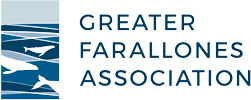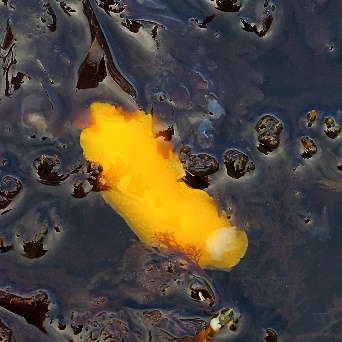Educational/Recruitment Info
Supplemental Information for LiMPETS.docx
Generic Clearance for Citizen Science and Crowdsourcing Projects
Educational/Recruitment Info
OMB: 0648-0828
Supplemental document for LiMPETS
What is LiMPETS?
LiMPETS (Long-term Monitoring Program and Experiential Training for Students) is a citizen science program for students, educators and volunteer groups. Citizen scientists monitor the coastal ecosystems of California’s national marine sanctuaries, increasing awareness and stewardship of these important areas. The statewide program connects over 6,000 citizens annually to the ocean, involves them directly in a hands-on scientific endeavor and increases their knowledge of the marine environment, creating a new generation of informed and engaged ocean stewards.
Beyond the educational value of the program, the power of LiMPETS lies in the large quantity of data collected at more than 60 sites and over 600 miles of California coastline. Annually, thousands of people collect baseline data. By monitoring, teachers, students and community groups become the eyes and ears for our coastal beaches and rocky shores, detecting changes and possible problems, often before anyone else. LiMPETS data have informed the Monterey Bay National Marine Sanctuary Condition Report, were published in the National Marine Sanctuary Conservation Series, and helped establish a baseline of key indicator species for the new system of California Marine Protected Areas (MPAs).
The LiMPETS Network developed a 5-year Strategic Plan to meet our mission and fulfill our vision of inspiring the next generation to understand, value, and participate in science.
WHY MONITOR?
Long-term monitoring is needed to be able to evaluate the health of California’s intertidal systems. The intertidal habitats along the West Coast of the United States are among the most diverse and productive of any region in the world. Despite their ecological significance and protected status, these habitats are being increasingly impacted by human activities (directly by harvesting and trampling, indirectly through oil spills, pollution and litter). In addition, there are dramatic geologic and climatic disruptions (earthquakes, severe storms, and global climate change) that could generate change in the balance of life along our shores. By monitoring, we establish a baseline from which we can better address current and future impacts.
ACKNOWLEDGEMENTS
The LiMPETS network is a collaborative program with many committed partners and contributors. We are grateful to have such a dedicated LiMPETS team that continually connects teachers and students with the ocean. Special thanks to Dr. John Pearse, Dawn Osborn and Christy Roe for bringing their expertise to the Rocky Intertidal Monitoring Program. Additional thanks to Dr. Jennifer Saltzman and the Farallones Marine Sanctuary Association for their contribution of the Sandy Beach Monitoring Program, website and database.
Special thanks to the following organizations who, along with individual donors, make this program possible. Support for this program has been provided by: National Marine Sanctuary Foundation, David and Lucile Packard Foundation, Disney Worldwide Conservation Fund, California Coastal Commission, California Coastal Conservancy, California Sea Grant, Friends of Fitzgerald Marine Reserve, Kimball Foundation, NOAA’s Bay-Watershed Education and Training Program, and the S. D. Bechtel, Jr. Foundation.
“
This is one of the best things I could ever do to enhance science education and conservation of our spectacular coastline. Working with teachers and their students is a wonderful and fulfilling experience.
”
Dr. John Pearse, Professor Emeritus, Univ. of California at Santa Cruz
STUDENT SCIENTISTS ON OUR SANCTUARY SHORES
LiMPETS is a citizen science program that monitors the coastal ecosystems of California and helps youth develop a scientific understanding of the ocean. LiMPETS monitors the biology in rocky intertidal and sandy beach ecosystems and aims to provide publicly accessible, scientifically sound, long-term data to inform marine resource management and the scientific community.
How do I Get Involved?
WHO CAN PARTICIPATE?
We work with many different types of school groups, informal environmental education and community organizations. Our Sandy Beach Monitoring Program is open to 6th grade to college students, while our Rocky Intertidal Monitoring Program is designed for 9th grade to college students.
Schools and environmental education groups pay a small fee to join LiMPETS and to conduct monitoring alongside LiMPETS scientists. Once you are a part of LiMPETS, we provide staff support and a variety of resources. Offices are located in San Francisco, Monterey, and Santa Barbara. Services include equipment loan, assistance in the classroom and the field, support with data entry and analysis, and more!
Are you a student interested in LiMPETS? Ask your science teacher to get involved!
Are you an educator that lives more than 50 miles from the nearest National Marine Sanctuary Office? Read about our operating policy for educators outside the vicinity of our offices.
WHAT IS INVOLVED?
LiMPETS Workshop: All teachers and educational leaders need to participate in a Workshop to join LiMPETS.
Training: LiMPETS science educators come to your class prior to monitoring to teach your students protocols, species identification, etc.
Monitoring: Collect important data with your students! How frequently should you monitor? That’s up to you. Some participants monitor only once per year. Others monitor seasonally or monthly.
Data Entry: After data is collected, you and your students enter data online.
Analysis: Optionally, students research questions and use the online graphing tools to analyze results.
Communication: Sharing your results is important too! Some participants present posters at scientific meetings; others enter student film contests or write science blogs for the LiMPETS website.
HOW DO I GET STARTED?
Contact the LiMPETS coordinator in your area.
Learn about the program and protocols! Your LiMPETS coordinator will ask you to complete an Introductory Workshop before starting a LiMPETS program at your school or organization.
Methods Used to Monitor the Intertidal
Our main objective for monitoring the rocky intertidal is to establish a baseline upon which changes (or lack of changes) can be followed over time. To achieve this, the LiMPETS program uses four sampling methods. Each site in the LiMPETS network uses one or more of these methods, though procedures vary somewhat from site to site.
Why do protocols vary from site to site?
VERTICAL TRANSECT
A major concern over the next several decades will be the effect of rising sea levels, as a consequence of global warming, on the creatures within the rocky intertidal. Will species shift up higher in the intertidal as sea level rises? We can collect data along a vertical transect to provide the answer. Continued »
RANDOM QUADRATS IN A PERMANENT AREA
By monitoring selected species using randomly placed quadrats inside a permanent area, we can determine statistically robust estimates of abundance that can be compared over time. Continued
TOTAL COUNTS IN A PERMANENT AREA
Some large invertebrates, such as solitary anemones, can have a major impact on community organization of the rocky intertidal. Human activities like collecting can influence the abundance of these animals, which themselves influence the abundance and distribution of other intertidal species. By counting these species in a large, permanent area, we can detect changes in abundance over time. Continued »
SIZE MEASUREMENTS IN A PERMANENT AREA
We count AND measure the size of ochre sea stars and owl limpets. Humans collect owl limpets, often illegally, for food. Generally, the largest individuals are preferentially taken for consumption. This size-selective harvesting has led to a widespread decline in body size of owl limpets along the coast of California. We count and measure this species in a large, permanent area to detect changes in abundance and size over time. Continued »
Student Resources: Rocky Intertidal Monitoring
Are you participating in LiMPETS Rocky Intertidal Monitoring? Take this readiness test before you collect data in the field. Don’t feel ready to take the test yet? Don’t worry, below you will find lots of resources and a practice quiz to help you out.
FACTSHEETS
PRACTICE USING A QUADRAT
Play the LiMPETS TidePool Game!
PRACTICE YOUR ORGANISM IDS
Program Registration
Use the links below to register for a 2021-2022 in-person, virtual, & hybrid programs with your local LiMPETS Partners.
For teachers working with Jaclyn Schneider and Tyler Mears at the Greater Farallones Association, please register here or email [email protected].
For teachers working with Hannah Sarver at the Pacific Grove Museum of Natural History, please register here.
For teachers working with Jessie Altstatt at the Channel Islands National Marine Sanctuary, please email [email protected].
LIMPETS PROGRAMS
LiMPETS (Long-term Monitoring Program and Experiential Training for Students) is an environmental participatory science and education program for students, educators, and volunteer groups. While public health and safety recommendations may limit the amount of in-person activities during the 2022-23 school year, we are continuing LiMPETS programming by offering virtual/in-person hybrid opportunities.
Register for LiMPETS Programs below.
Register for the 2022 Sandy Beach Teacher Workshop
LiMPETS Program 2022-23 School Year Options
Virtual Options Available to All Teachers:
1. Virtual Natural history exploration of Rocky Intertidal or Sandy Beach ecosystems:
Students learn how and why we monitor these ecosystems and how climate and ocean change are impacting them using training tools and activities in the LiMPETS curriculum. (2 modules, no teacher workshop required)
Grade level: 6th – college
Duration of program(s): ~40 min – 1.5 hr (depending on number of modules)
Additional Virtual & Hybrid Options Available to Trained LiMPETS Teachers:
2. Hybrid Rocky Intertidal or Sandy Beach ecosystem monitoring:
Students learn how and why we monitor these ecosystems and how climate and ocean change are impacting them using training tools and activities in the LiMPETS curriculum via an interactive virtual lesson (2 modules). Students will participate in a monitoring event where they will collect ecological data (Covid safety protocols implemented).
Grade level: 6th – college
Duration of program(s):
1.5 hr Virtual Classroom portion (can be broken into 2, 40 min modules)
3 hr Field Trip
3. Ocean Acidification the Other Carbon Dioxide Problem (reading and discussion): TEACHER LED
Students read a summary about the impacts of ocean acidification and/or a literature review on ocean acidification. Teachers facilitate a discussion in which students answer a series of questions in breakout groups and share in a classroom-wide scientific discussion. (For trained LiMPETS Teachers; prerequisite – Rocky Intertidal option 1)
Grade level: 9th – college students
Duration: ~ 30-45 min (not including reading)
4. Database 101 – data analysis training for students:
Students learn how to use the LiMPETS database to visualize, export, and graph data with Excel or Google Sheets to answer a Sandy Beach or Rocky Intertidal based question, led by LiMPETS staff. (For trained LiMPETS Teachers; prerequisite – option 1
Grade level: Sandy Beach 6th – college / Rocky Intertidal 9th – college
Two options for LiMPETS staff facilitation
~1 hr session per habitat learning to use the online database
~1 hr session per habitat learning to use graph exported data in Excel or Google Sheets
5. Science Communication Projects:
Students read scientific literature in advance and explore student-collected data online at www.LiMPETS.org with the guidance from LiMPETS staff. Students ask questions and test hypotheses then summarize their findings in the form of a blog post or scientific poster. (For trained LiMPETS Teachers; prerequisite – options 1 and 3 above)
Grade level: 9th – college students
Two ~1.5hr sessions with LiMPETS staff facilitating
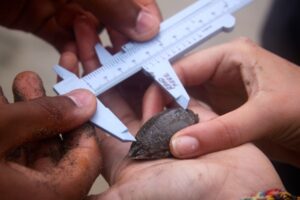
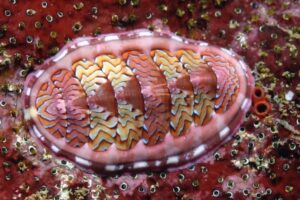
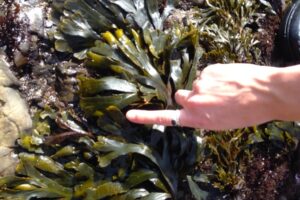
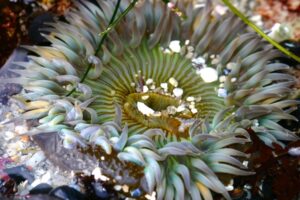
Registration
Please select the program format you wish to participate in. Prior to submitting you will indicate between the Rocky Intertidal and Sandy Beach Program. A class is considered to be 35 students. For monitoring field trips, we are only offering a hybrid program, where the class training will be done virtually and data collection is in person.
Program fees ensure the quality of the LiMPETS Program and go towards equipment, teacher resources, database maintenance, and more. Thank you for your support!
All fees will be waived for schools that are Title 1 and/or have a free/reduced-price lunch of 40% or higher, in efforts to advance equity and foster inclusivity in marine science education by engaging students, regardless of ability or background.
If you have any questions please email Jaclyn Schneider, LiMPETS Program Coordinator, [email protected]
VISITOR CENTER
991
Marine Drive
San Francisco, CA 94129
Hours: Wednesday
- Sunday, 10 AM - 4 PM
CONTACT US
Greater Farallones Association is a 501c3 nonprofit organization.
REGISTRATION
LiMPETS Sandy Beach Monitoring Teacher Workshop
DATE: Saturday, September 10, 2022
TIME: 11:00 AM-5:00 PM
LOCATION: Greater Farallones National Marine Sanctuary, 991 Marine Drive, San Francisco
Workshop attendees will receive:
A 5-unit curriculum, aligned with NGSS and Common Core
Hands-on training for sandy beach data collection and analysis
Year-round support from LiMPETS staff for scheduling field trips, training students, and collecting data
Students who participate in LiMPETS:
Collect data in California’s coastal ecosystems
Observe ecological phenomena
Contribute to a 20+ year database
LiMPETS Field Blog
Climate Connections: connecting educators to the latest in climate change vol. 2
Posted on March 10, 2021 by Rosemary Romero
This installment of Climate Connections by Sara Hutto Ocean Climate Program Coordinator for NOAA’s Greater Farallones National Marine Sanctuary was funded by NOAA’s CA Bay Watershed Education and Training (B-WET) Program
Hello LiMPETS educators, and welcome to the second edition of Climate Connections, where we connect you to the latest information on our changing climate. With a new year came a new administration and a new federal (re)focus on climate change. Hurrah! Considering 2020 tied with 2016 as the hottest year ever, and the last 6 years were the hottest 6 years ever (do I sound like a broken record from last year’s report?), there’s no time like now to take some bold actions:
Posted in Climate Connections, Uncategorized |
Climate Connections: connecting educators to the latest in climate change vol. 1
Posted on April 9, 2020 by Rosemary Romero
This installment of Climate Connections by Sara Hutto Ocean Climate Program Coordinator for NOAA’s Greater Farallones National Marine Sanctuary was funded by NOAA’s CA Bay Watershed Education and Training (B-WET) Program
Hello LiMPETS educators, and welcome to the first edition of Climate Connections, where we connect you to the latest information on our changing climate. Not only is it a new year, but a new decade, so first let’s focus on where things stand and what this means for the special coast and ocean places we love.
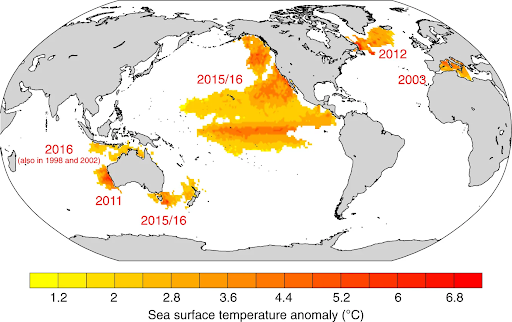
Image of recent and significant marine heatwaves, from Frölicher and Laufkötter (2018)
Posted in Climate Connections |
Coming Full Circle with LiMPETS
Posted on October 4, 2019 by Rosemary Romero
By Ali Boutros, GFA 2019 Summer Intern; UCLA ‘20
Having grown up in San Francisco, I was exposed to the endless nature that Northern California has to offer. I spent my childhood exploring the waters of Baker Beach, surfing the Northern California coastline and hiking and camping in the beautiful mountains of Desolation Wilderness. Waking up early for school every morning was made more enjoyable by the sound of the foghorn—which I have come to love—and the faint smell of the ocean. My interest in nature and the ocean was ingrained in me from a very young age, and was further developed into a passion through the exposure and experience I gained in my coursework at The Branson School. Each morning, as I crossed the Golden Gate Bridge on my way to school, I took in my surroundings—the fog hugged the tall pillars of the bridge and the rugged cliffs dropped steeply into the churning waters of the vast Pacific Ocean. I watched whales and dolphins splashing in the water from my car window. Questions started to pop up in my head. What caused the fog to concentrate in the bay and then disperse almost immediately upon entering Marin? Why were the whales more active during certain months of the year? How did this whole ecosystem work? My interest was sparked and my curiosity craved answers.
Posted in Branson School, Guest Blogs, Student Blogs |
The Power of Community Science
Posted on January 16, 2019 by Emily Gottlieb
By Emily Gottlieb, Pacific Grove Museum of Natural History
On a sunny afternoon in late October, a small group of students from an alternative high school were participating in the LiMPETS sand crab monitoring program at their local beach. Many had not been present for the in-class training a few days prior, so standing in the beach parking lot, they had a crash course in the monitoring protocol. They learned how to set vertical transects and collect their samples, how to measure and sex the crabs, how to return the crabs to the swash zone after collecting their data. After some half-hearted grumbles about getting their feet sandy, they had made their way down to the water. Once there, they followed the protocol meticulously, quickly forgetting their protests against the sand. After completing their survey, most of the students were wading in the shallow water or gathering their gear to return to the parking lot, but one student was hanging back. His towering 6-foot frame was bent over a small sandy child who had curiously wandered over with his mom. The high school student was gingerly holding a large sand crab and demonstrating how to lift the crab’s telson to reveal the bright orange eggs that she carried. The tiny beachcombers’ eyes went wide with fascination and the high school student was beaming — fully engaged in this teaching moment as he shared his newfound expertise.
Posted in LiMPETS Staff, Uncategorized |
Citizen Science: Shaping the Youth and Understanding our Habitats
Posted on September 7, 2016 by Anais Maurel, Marine Science Intern
By Anais Maurel, Marine Science Intern
I first heard about the LiMPETS program when I was looking for an internship after college and stumbled onto a job posting for a Marine Science Intern. I was immediately drawn to it as I read about the citizen science program that focused on looking at changes in organisms’ population and density at sandy beaches and tidepools of the California Coast. I was ecstatic when I got the call that I got the internship and couldn’t wait to start. My weeks consisted of time out on the field and time in the office, and I’ve learned so much from both.

Being
out on the field, I got to see some amazing organisms that I’d
never experienced before such as anemones or nudibranchs. But that
wasn’t the best part of doing research in the field: working
alongside students was by far the most rewarding part. While some of
the students were taking AP Biology classes and were obviously
interested in research, others seemed slightly indifferent at first.
But, by the end of the day, most students were happy and excited to
have seen so many cool invertebrates. As I believe that the future of
the world belongs to the youth of today, knowing that we had made a
difference in how some students viewed science made me hopeful.
Hopeful that at least one of them would want a job in the sciences.
Hopeful that we taught them that they need to preserve our coast.
Hopeful that we shaped their minds to think about nature first.
While I always had fun on the field, seeing the behind-the-scenes work of a non-profit organization was the highlight of my 5-months internship. I had different tasks to accomplish such as data entry and quality checks, daily social media posts, analyzing the database for interesting trends, and writing reports, but all this work was nothing compared to the work the rest of the LiMPETS team has to do. It really opened my eyes to see that leading a program takes more than planning visits to our field sites: it takes coordination with the teachers and other offices down the California coast, daily calls and meetings, updating the curriculum and implementing better practices, exploring grants possibilities in order to get funding, and excellent organization skills. Every day at the office was different, there was always another exciting task and another skill to learn about.
I couldn’t have asked for a better program to intern with and will be looking forward to the wonderful things the LiMPETS monitoring has planned for the future.
Posted in Uncategorized |
Exploring the tide pools in Pebble Beach, Pacific Grove
Posted on November 17, 2015 by Monika Krach
Posted in Uncategorized | Tagged California, citizen science, climate change, conservation, intertidal, invertebrates, Rocky intertidal, tide pool |
Livermore High School AP Biology students explore the tide pools at Point Pinos in Pacific Grove
Posted on November 10, 2015 by Monika Krach
Posted in Uncategorized |
Oil? Spills? and Crabs? Oh my!
Posted on November 6, 2015 by Monika Krach
Sarah,
Anika, and Marco
Bishop
O’Dowd High School
How did the 2007 oil spill in the San Francisco bay affect the population of sand crabs in the area? This question is important because sand crabs are significant to beach ecosystems; they are food for many animals, and they are also an indicator species. This means that scientists and researchers can look at sand crabs to determine the health and sustainability of beaches and other marine ecosystems.
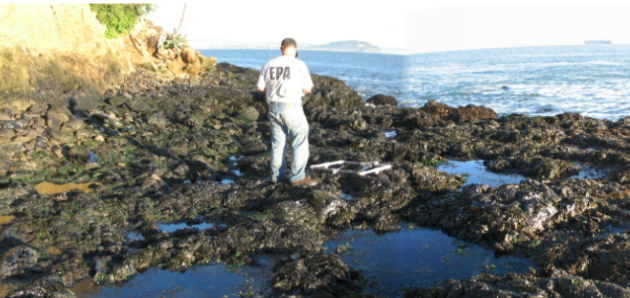
Source: https://nrm.dfg.ca.gov
Posted in Bishop O'Dowd, Student Blogs | Tagged beach, California, citizen science, oil spill, sand crab | 3 Comments |
Crabtivating Sand Crab Distribution at Playa Del Rey Beach
Posted on November 6, 2015 by Monika Krach
Cleo,
Jerome, Kate, and Gloria
Bishop
O’Dowd High School
No
need to feel clawstrophobic (or get crabby), there is plenty of room
for all the sand crabs on Playa del Rey Beach! So, how has sand crab
population changed over time on this Southern Californian beach? This
question allows us to further understand the Southern California sand
crab population.
Continue
reading →
Posted in Bishop O'Dowd, Student Blogs | Tagged beach, citizen science, sand crab, southern california | 3 Comments |
What about the Children?
Posted on November 5, 2015 by Monika Krach
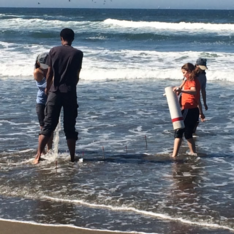 Gianna,
Jack, Peter, and Nathan
Gianna,
Jack, Peter, and Nathan
Bishop
O’Dowd High School
After
going on a trip to Ocean Beach in San Francisco and gathering data
about the local sand crabs, we wondered how many of them were
“recruits,” little crabs which are new to life on the
beach. How does this number change over time? Once a recruit settles
on a beach, it will spend the rest of its life there. So, a healthy
recruit population means that there will be a healthy adult
population in the future (unless there is an environmental hazard).
As long as there are no environmental hazards or strange weather
conditions, the portion of recruits can be used to predict future
sand crab growth and decline.
Continue
reading →
Posted in Bishop O'Dowd, Student Blogs | Tagged beach, citizen science, Ocean Beach, recruits, sand crab | 2 Comments |
Post navigation
← Older posts
SCHOOLS
| File Type | application/vnd.openxmlformats-officedocument.wordprocessingml.document |
| Author | Joe.I.Terry |
| File Modified | 0000-00-00 |
| File Created | 2023-10-24 |
© 2025 OMB.report | Privacy Policy
